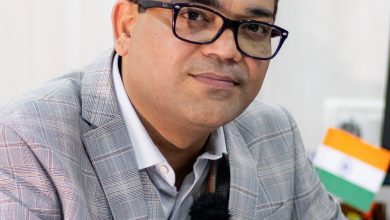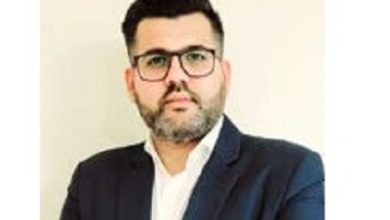Advanced techniques help us to give a higher dose to the tumour

The medical linear accelerator( LINAC) has emerged as a groundbreaking technology revolutionising the landscape of cancer care. LINAC has often been christened as the workhorse of radiotherapy and is today a prized resource for any radiation oncologist given its power of precision and accuracy while generating better clinical outcomes and ensuring better survival rates amongst patients. Saro Jacob, Consultant – Radiation Oncology & Head of Department – Oncology, Bangalore Baptist Hospital (BBH) gives a brief about how the recent acquisition of True Beam LINAC machine can bring in a revolution in cancer care.
Given that the market is inundated with various options for the LINAC machine, to cite a few examples like MRI LINAC by Elekta, CT LINAC, Aurora RT and Accuray LINAC, why was True Beam LINAC your first choice?
We wanted a LINAC machine in which we would be able to treat our patients with various kinds of tumours. We looked at a machine that was able to deliver the treatment in a very short time (Rapid arc delivery) to reduce patient inconvenience and a machine that would have various techniques ranging from simple techniques such as simple conventional fields up to the latest conformal ones such as Image-guided radiotherapy (IGRT) and Stereotactic radiotherapy (SRS/SBRT), so we narrowed it down to a LINAC machine.
The LINAC machine also allows us to do blood product irradiation daily (to supplement the Hematology/ Bone marrow transplant unit). The MRI LINAC is a machine that uses MRI to plan instead of a CT scanner. The Accuray is a tomotherapy machine. These machines have their role in certain tumours but are not work-horses like a LINAC machine.
Before you decided to acquire a LINAC machine, what were your other radiotherapy modalities being used for cancer treatment?
Our radiotherapy centre started in 2010 with a LINAC machine. We didn’t have radiotherapy services at BBH before that.
A radiotherapy machine requires appropriate safety measures. How have you upgraded the facilities at your hospital to accommodate this high-end machine?
All radiotherapy departments have safety regulations laid down by the Atomic Energy Regulatory Board (AERB) in India and we have to strictly abide by those guidelines. These include large, thick-walled bunker rooms that house the LINAC, the occupancy around the radiation area, the recording of radiation levels received by radiation workers and whether it is the permissible limits. We have an in-house Radiation Safety officer (RSO) who is a medical physicist. He/she ensures that these safety measures are heeded and sends a periodic report of the radiation levels survey in the different areas of the hospital. He/she will also look and report to the AERB the details of the hospital staff that work in the radiation areas.
Could you throw some light on some of the key features of the TrueBeam LINAC machine?
We opted for a TRUE BEAM machine as it is a sturdy machine, with clever technology, fast treatment delivery time and easier to operate by the radiation technology team. This machine has advanced techniques such as IGRT/SRS/SBRT which we can offer to our patients. These advanced techniques help us to give a higher dose to the tumour (better cure rates) and a reduced dose to the tumour tissues (reduced side effects/ toxicity).
When a prospective cancer patient approaches you, how do you design his / her treatment plan? What category of cancer patients become candidates for radiotherapy using the LINAC machine?
Radiotherapy as a modality is used for the treatment of a tumour/cancer locally. In 50- 60 per cent of cancers, radiotherapy will be required as part of the treatment plan. When a patient comes to us for radiotherapy treatment, we review the type of cancer, the stage of the cancer and the patient factors such as age, weight, nutrition status, associated co-morbidities, performance status, his/her consent for treatment and then make a radiotherapy treatment plan (area to be treated, dose, number of days to be treated) for that particular patient. Almost all types of tumours/cancers can be treated on a TRUE BEAM LINAC.
In what ways will cancer patients benefit from radiation therapy with a LINAC machine in comparison to conventional therapies?
True Beam LINAC machine has advanced techniques such as IGRT/SRS/SBRT which we can offer to our patients. These advanced techniques help us to give higher doses to the tumour (better cure rates) and reduced dose to the tumour tissues (reduced side effects/toxicity).
What are some of the clinical applications of the Truebeam LINAC machine?
Treatment of almost all cancers is possible on the True beam LINAC. These include cancers of the head and neck, brain tumours, lung, breast, gastrointestinal, colorectal, gynaecological, urological, muscle and bone cancers. Some blood cancers such as leukaemia and lymphoma also require radiation therapy as part of their treatment. Some benign cancers such as desmoid tumours, craniopharyngioma, Vestibular schwannomas, etc also benefit from radiotherapy.
The Radiation therapy market has been seeing rapid innovation and iterations in machines over the years. What can we expect w.r.t radiation therapy in the upcoming years?
The field of radiation oncology has had ‘quantum leaps’ in terms of advancements in the last few decades. We have had developments in diagnostic radiology that have enabled us to visualise tumours in three-dimensional, explosive growth in computer hardware and software that aid radiotherapy planning and the parallel improved engineering of the linear accelerators. This has given us advanced radiotherapy techniques such as IGRT/SRS/ SBRT which we can offer to our patients.
These advanced techniques help us to give higher doses to the tumour (better cure rates) and reduced doses to the tumour tissues (reduced side effects/toxicity). The future for radiation oncology is promising and it is an exciting time to be a radiation oncologist. Already, we are incorporating radiation therapy with radiomics, immunotherapy and gene therapy. The future progress in radiotherapy and genomics (the analysis of a patient’s genetic information) will make personalised medicine work better. This will help in selecting the most optimal radiation therapy regimen and crafting treatment plans that align precisely with the patient’s genetic profile.
Can you tell us a bit about the oncology department in Bangalore Baptist? What are your treatment modalities for cancer? Have you adopted any innovative techniques in the recent past as part of your cancer treatment regimen?
BBH has been offering cancer services for the last 25-30 years, much before the radiotherapy services were initiated. Cancer surgeries (for breast, head and neck cancers, gynaecological cancers, brain tumours, paediatric cancers) were started in the hospital in the 90s and presently we have skilled Oncosurgeons that operate on all kinds of tumours. We perform procedures such as Hyperthermic intraperitoneal chemotherapy (HIPEC) and reconstructive surgeries (after mastectomy in the breast) in patients who require them.
We had started the chemotherapy services at BBH in the 90s and by the mid-2000s, we established a chemotherapy unit with a biosafety cabinet for admixing chemotherapies, targeted therapies and immunotherapies. Our staff consists of trained chemotherapy nursing staff and clinical pharmacists. Patients who require central line access such as a Chemotherapy port catheter or a ercutaneous central catheter (PICC) are offered these services. Presently, we have an average of 20 patients on chemotherapy daily.
The Hematology services started in mid- 2000 and by 2020, we started a Bone Marrow Transplant Unit (BMTU) with four patient rooms. We started Stem cell harvest apheresis and Total body irradiation (for conditioning patients for BMT). To date, we have completed 30 successful transplants, of which 11 are allogenic and 19 are autologous.




